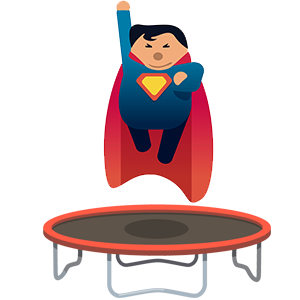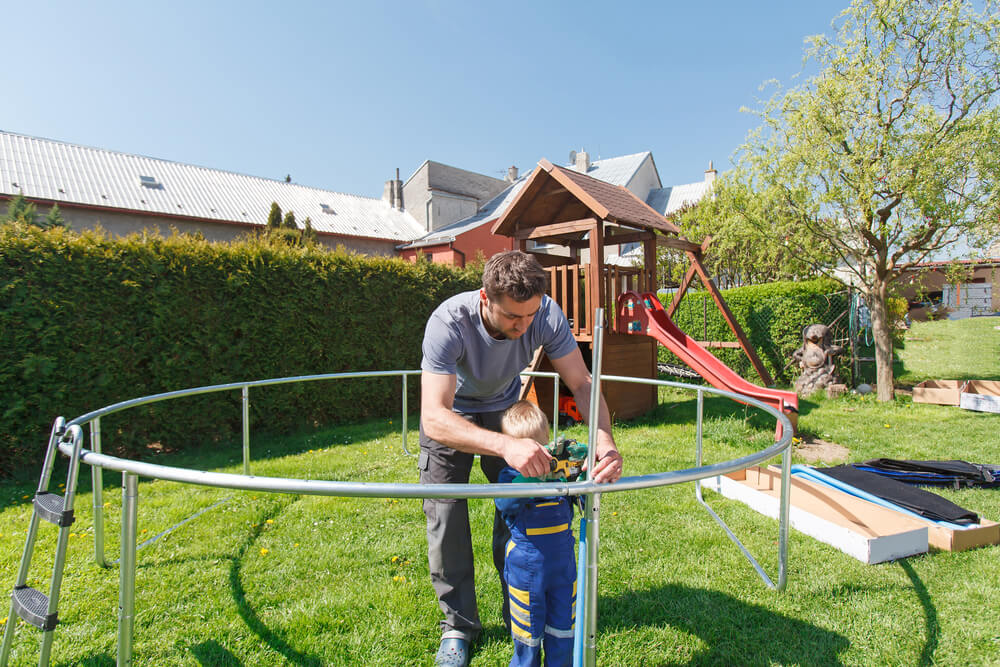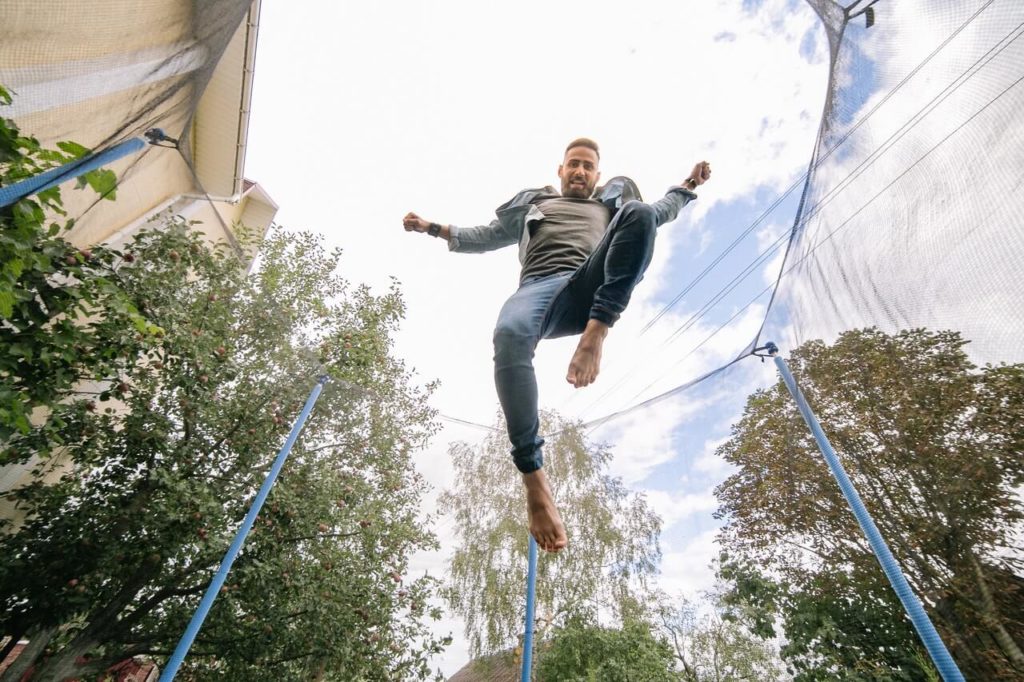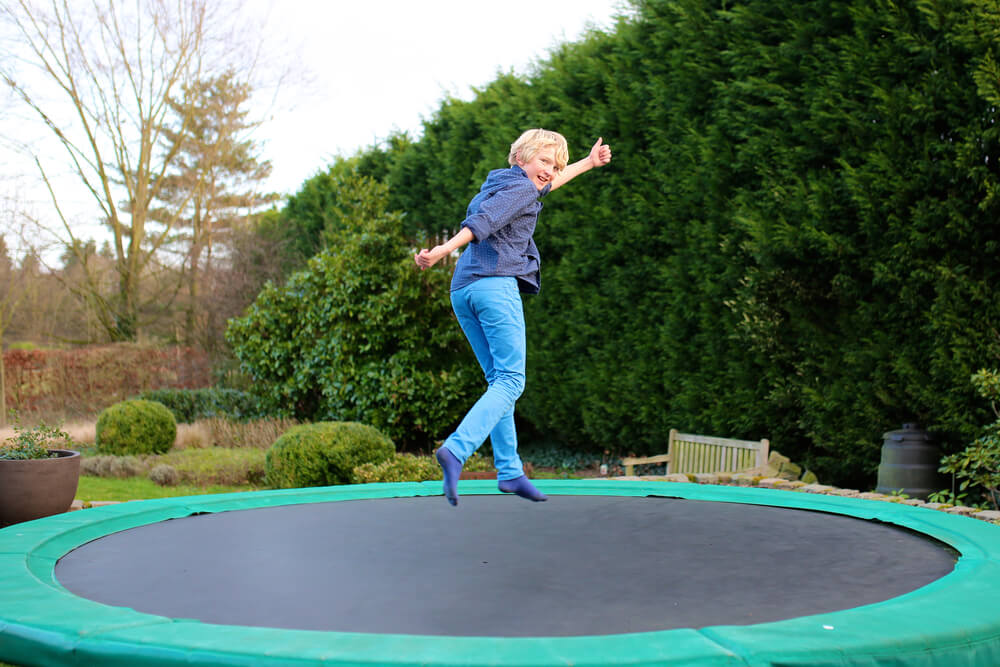Rebounding is the most flexible activity anyone can do. But how does this exercise affect your knees? Read on to find out the answer.
The concern of whether trampolining is bad for your knees may be the main reason you dread the exercise.
But don’t put off the idea of rebounding yet because we’re going to reveal facts about trampolines that will definitely excite you.
Back to the million-dollar question, is a trampoline bad for your knees?
Knee problems can occur any time when you strain, hyperextend or strain your knee while descending the stairs.
But our focus today is to understand if a rebounder is bad for your knees.
Trampolining is a low-impact workout, meaning that it is not bad for your knees. If you have chronic knee issues, you cannot be harmed by jumping on a trampoline.
To understand more, let’s delve in.
Trampolining and Your Knees
First off, every activity you perform has a health hazard, including rebounding. You can get a knee injury while jumping on a trampoline.
But this will not happen if you are careful enough not to hyperextend your knees during trampolining. A hyperextended knee can be a medical emergency if the injury is quite severe.
This happens when you twist your knee, causing a minor ligament tear. The pain can be excruciating and will last for a couple of days. In severe cases, you’ll have to undergo surgery.
How a Rebounder Knee Injury Occurs
A hyperextended knee injury happens when you land awkwardly while rebounding and twist your knees.
You can also injure your knees when you rebound on the edge of your trampoline onto the metal springs. This can cause knee twists, bruises, and cuts. The only way to prevent this is to make sure the metal springs are covered with thick foam padding.
The good news about all these is that trampoline-related knee injuries are not a common occurrence – they are super rare.
Unless while jumping, you land on an awkwardly bent knee, there is no chance of hurting your knees, especially when the rebounder is enclosed by a safety net.
So what does this really mean?
Let’s find out below.
Is a Trampoline Good for Your Knees?
Yes, a trampoline is great for your knees. Any activity involving trampoline jumping is good for bone health because it helps to retain bone density.
Rebounding and Arthritis
Arthritis is a severe condition that causes pain and aching when walking or running. But studies have shown that patients who use mini trampolines to rebound can manage arthritis symptoms successfully.
Jumping and rebounding slowly on a trampoline is most recommended compared to jogging, walking, and running.
This is because trampolining puts 80% less pressure on knee joints, strengthening them without absorbing the impacts from hard surfaces.
It’s not easy to start rebounding when you have arthritis. You’ll experience difficulties jumping at first.
But with much effort and endurance, the pain will start easing up and make you feel better each day.
All you need is to start slowly and increase your time on the rebounder as days go by.
What Happens When You Have Bad Knees?
Injuring your knee due to twisting or impact is pretty different from having a chronic medical condition such as arthritis.
That’s why it will depend on how comfortable you will be on the trampoline with a bad knee.
If you injure your knee from trampolining, getting back might not be a good idea. You’ll have to wait until you’re better to do that. While you’re recuperating, you should avoid any strenuous activity like running, brisk walking, push-ups, or squats.
When you feel better, you can hop right back on the trampoline. Trampolining is not as impactful on your knees, so it’ll be okay. The only thing you’ll need to do is take it slow and easy.
Trampolining Activity Tips for Your Arthritic Knees
If you’re suffering from chronic knee problems like arthritis, you can get on a trampoline training program as soon as you can. This will help strengthen your knee muscles to relieve the pressure off the knee joint.
That’s why we have outlined a few rebounding exercises to help you manage your pain.
1. Perform a health bounce. To perform a health bounce, use your heels to create a jumping motion. Make sure your feet are firm on the trampoline. Bounce like this for two to five minutes for the best results.
2. Spread your legs on the trampoline. Then stomp slowly onto the mat with both feet. Continue stomping and lean downwards slowly to a crouching position. Go as low as you can; just don’t overdo it, especially if you don’t feel comfortable.
3. Jump on your mini rebounder, but not too high. As you jump, bring your left arm close to your right leg. Switch sides and bring your right arm close to your left leg. Keep interchanging until you are satisfied.
4. Bunny hop. Bunny hopping is easy. What you’ll do is jump a little using both legs. Make sure you land with both your feet close to one another. Keep this jumping motion from left to right with the feet landing together. Just imagine you are jumping back and forth on a surfboard.
These exercises are great for both beginners and experienced rebounders with knee problems. They will help strengthen your knees.
Best Trampoline for Bad Knees
Your choice of the rebounder is very important when you have knee problems. When shopping for a trampoline, always pick one without springs.
A springless trampoline will absorb the impact of your bounce while one with springs won’t.
As someone with bad knees, you need an easy workout that will not strain your knees. A springless trampoline will make bouncing easy and flexible, benefitting your knees in the long run.
A mini trampoline 3 feet in diameter is most recommended. It will offer controlled and gentle jumps and rebounds.
You shouldn’t be overly active when you have a chronic knee condition. This will cause inflammation to your tendons and ligaments.
To rebound comfortably, wear athletic shoes. They are made with thick cushions that help lessen the impact of any hard surface.
Take Away
Now you understand how trampolining affects the knees either positively or negatively.
Rebounding is an easy exercise, and you don’t have to spend a lot of time on it. With just about 10 – 15 minutes, you’ll have had your fill of exercise for the day.
But at the same time, within those 10 minutes or so, you can experience sore muscles, cramps, or even a hyperextended knee. The most important thing you should do is take it slow.
If you are arthritic, get the doctor’s approval and advice before you start rebounding. We hope this article clears the air about the way trampolining affects your knees.







